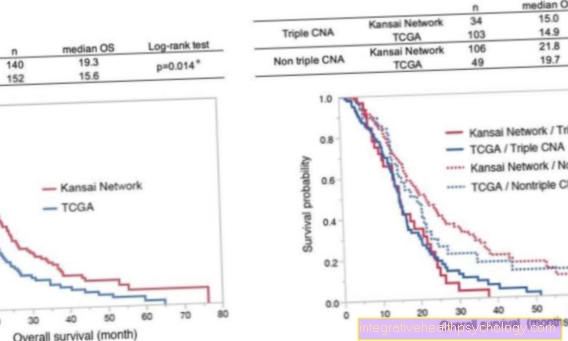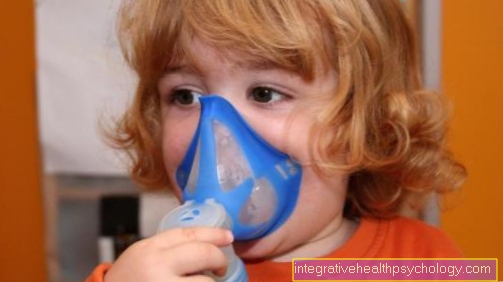Bed linen for allergy sufferers
introduction
Many people suffer from allergies. The allergy to house dust mites is particularly common. This is associated with certain restrictions in everyday life. House dust mites and their excrement can be found in a wide variety of fabrics in the home, including upholstered furniture and bed linen. As a result, many allergy sufferers suffer from sleep problems, have a less restful sleep and often wake up with a cold, watery eyes and a swollen nose. It is therefore important to take appropriate measures so that those affected do not suffer too much from the house dust allergy and feel too restricted in everyday life.

What do you have to consider with bed linen for allergy sufferers?
When a diagnosis of allergy is established and it becomes necessary to buy allergy bedding, there are a few things to look out for.
First of all, you should talk to a doctor about all therapy options when diagnosing the allergy. Bed linen for allergy sufferers is usually not sufficient on its own as a treatment. It should therefore rather be used as an additional aid to an adapted medication or desensitization. Without adequate therapy, the allergy can otherwise worsen and lead to bronchial asthma at a later stage.
When buying bed linen for allergy sufferers, special characteristics of bed linen should be taken into account. Companies such as Stiftung Warentest regularly check bed linen for allergy sufferers. This guarantees that these are also suitable for allergy sufferers. Therefore, attention should be paid to the test seal for "suitable for allergy sufferers" and the pollutant test.
Furthermore, a few things should also be considered in the household, as the use of bed linen alone is not sufficient for allergy sufferers. This includes, for example, regular ventilation and vacuuming to avoid the spread of house dust mites in the air.
If you are interested in this topic, read more about it under: Pillows for allergy sufferers - what should I consider when buying?
What fabrics should bed linen be made of?
There are different fabrics that are suitable for bed linen for allergy sufferers. In general, tightly woven fabrics are more suitable, as house dust mites are less able to nestle in the dense fabric network. This means that there are fewer dust mites and other pollutants in tightly woven bed linen that can cause problems for allergy sufferers.
A very popular fabric for bed linen for allergy sufferers is cotton, as it is very low in irritation and generally well tolerated. Any additives should, however, be avoided. Silk is also very suitable for allergy sufferers, as it absorbs little dust or harmful substances and, thanks to its consistency, can ensure a pleasant temperature balance. However, since it can only be washed at low temperatures, it is not recommended for everyone with allergies. Synthetic fibers can also be used as a fabric for allergy bed linen. Polyester, for example, can be washed at high temperatures, but this often ensures inadequate temperature equalization and often leads to sweating while sleeping. A newer material that is said to be particularly suitable for children is called Tencel or Lyocell. A good temperature balance takes place here and the fabric has been dermatologically tested. It is also considered to be very tear-resistant, which makes it particularly suitable for children.
On the other hand, great care should be exercised with animal hair, for example, as this can lead to allergic reactions in the case of corresponding allergies.
You might also be interested in this topic: Air purifier for allergies
How often should I wash the bed linen?
When using bed linen for allergy sufferers, proper cleaning is very important. The bed linen should not be washed too often, otherwise the protection against dust mites may be lost. Therefore, bed linen for allergy sufferers should be washed less than normal bed linen, usually every 2-4 months. However, you should always pay attention to the information provided about bed linen. Approx. The bed linen should also be renewed every 3 years to guarantee optimal protection for allergy sufferers.
How and with what should I wash the bed linen?
Bed linen for allergy sufferers should be washed at the highest possible temperature so that the dust mites can be killed. These die from a washing temperature of 60 degrees, a temperature of 90 degrees is even better. Care should be taken to ensure that the bed linen fabric can also be washed at these temperatures. In addition, an intensive rinse cycle is preferable. When choosing the detergent, it should be ensured that it consists of herbal products, if possible without additives. You should also pay attention to a mineral base.
How do I get rid of dust mites in bedding?
In order to get rid of dust mites in bedding, there are several factors to consider.
On the one hand, the bed linen should be adequately cleaned. This includes regular washing - depending on the fabric of the bed linen - at sufficiently high temperatures. This can kill the dust mites. The bedding should be beaten and aired regularly to shake house dust and mites out of the sheets. At the same time, skin flakes, which are the main food of the house dust mites, are removed.
In addition, there is the environment, which should be made as uncomfortable as possible for the house dust mites. Dust mites can survive well in the bedroom due to the presence of mold. It is therefore important to ensure a balanced room temperature and humidity. Regular ventilation is therefore of great importance. Regular room cleaning, including wet wiping in the case of laminate or parquet, and vacuuming with fine dust filters also help to reduce house dust mites.
Are there bed linen for allergy sufferers on prescription?
Nowadays there are many health insurances that contribute to the cost of bed linen for allergy sufferers or even cover them completely. Statutory health insurance, in particular, often takes on a portion of the costs. Whether a (partial) amount will be reimbursed and how high it is should be clarified in advance with the health insurance company. In most cases, a medically confirmed diagnosis of the allergy is necessary in order to receive an additional payment from the responsible health insurance company.
What do mattress protectors do?
Mattress protectors are bed protectors that can be placed on top of the mattress to serve as a bed pad. Thereby they protect against dirt and reduce the contact between the house dust mites or their droppings and the people sleeping on the mattress. However, the mattress protectors do not completely enclose the mattress. Therefore, this function is only possible to a limited extent and, depending on the severity of the allergy, should not be used as the sole aid to alleviate the allergy symptoms.
In general, mattress protectors reduce dirt and soiling, ensure better temperature control and increase sleeping comfort. This can significantly improve people's sleep quality. However, when buying a mattress protector, you should always pay attention to the quality. We therefore recommend that you seek advice from a specialist shop in order to achieve the best possible coordination of all of the bedding.
What to think of encasing?
An encasing is a special cover for the mattress, which is supposed to protect the allergy sufferer from direct contact with the house dust mites and their excrement. They are made of very dense plastic and are stretched over the mattress. As a result, on the one hand, the house dust mites cannot easily come to the surface and come into direct contact with the person sleeping on the mattress. On the other hand, the mites get less food because the flakes of skin remain on the encasing.
Thanks to this principle, encasings can be of great benefit to allergy sufferers and significantly reduce sleep problems caused by allergic irritation. However, it is important to pay attention to the quality when buying an encasing. Various factors should be taken into account. This includes breathability to avoid excessive sweating, as well as sleeping comfort, as some encasings crackle a lot when you lie on them. Furthermore, additional pollutants that can cause further allergic reactions should be avoided. The cleaning instructions for the encasing should also be taken into account. Professional advice is therefore always recommended in specialist shops. In addition, it can be agreed in advance with the health insurance company whether it will cover part of the costs.
How high are the costs or additional costs for bed linen for allergy sufferers?
The cost of bed linen for allergy sufferers varies depending on the properties it is supposed to have. There are different types of bed linen for allergy sufferers, which accordingly have different costs. Normally, a checked bed linen in a specialist retailer can cost around 30 to 70 euros. However, this can vary both upwards and downwards. Before buying bed linen for allergy sufferers, it is always advisable to inquire with the health insurance company about possible cost coverage, as many health insurance companies take over part or even the full amounts.
More information
Other topics on our site that might interest you:
- Allergic reaction
- House dust allergy





























